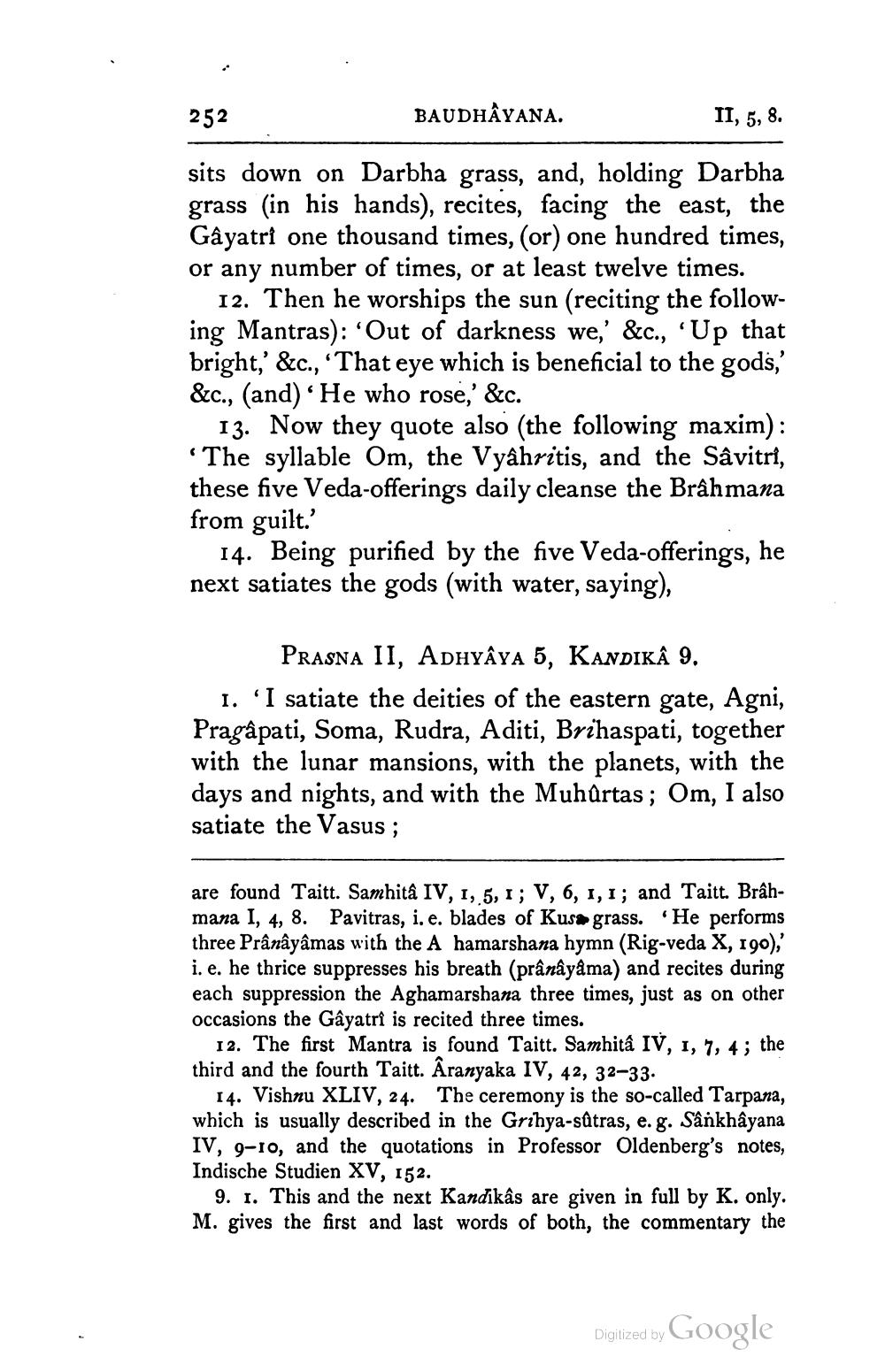________________
252
BAUDHAYANA.
II, 5, 8.
sits down on Darbha grass, and, holding Darbha grass (in his hands), recites, facing the east, the Gayatri one thousand times, (or) one hundred times, or any number of times, or at least twelve times.
12. Then he worships the sun (reciting the following Mantras): 'Out of darkness we,' &c., 'Up that bright,' &c., “That eye which is beneficial to the gods,' &c., (and) “He who rose,' &c.
13. Now they quote also the following maxim): "The syllable Om, the Vyâhritis, and the Sâvitri, these five Veda-offerings daily cleanse the Brâhmana from guilt.'
14. Being purified by the five Veda-offerings, he next satiates the gods (with water, saying),
Prasna II, Adhyâya 5, KANDIKÂ 9. 1. 'I satiate the deities of the eastern gate, Agni, Pragâpati, Soma, Rudra, Aditi, Brihaspati, together with the lunar mansions, with the planets, with the days and nights, and with the Muhûrtas; Om, I also satiate the Vasus;
are found Taitt. Samhita IV, 1, 5, 1 ; V, 6, 1,1; and Taitt. Brâhmana I, 4, 8. Pavitras, i.e. blades of Kusa grass. He performs three Prânâyâmas with the A hamarshana hymn (Rig-veda X, 190);' i. e. he thrice suppresses his breath (pranayama) and recites during each suppression the Aghamarshana three times, just as on other occasions the Gayatri is recited three times.
12. The first Mantra is found Taitt. Samhita IV, 1, 7, 4; the third and the fourth Taitt. Aranyaka IV, 42, 32–33.
14. Vishnu XLIV, 24. The ceremony is the so-called Tarpana, which is usually described in the Grihya-sâtras, e.g. Sânkhayana IV, 9-10, and the quotations in Professor Oldenberg's notes, Indische Studien XV, 152.
9. 1. This and the next Kandikâs are given in full by K. only. M. gives the first and last words of both, the commentary the
Digitized by Google




